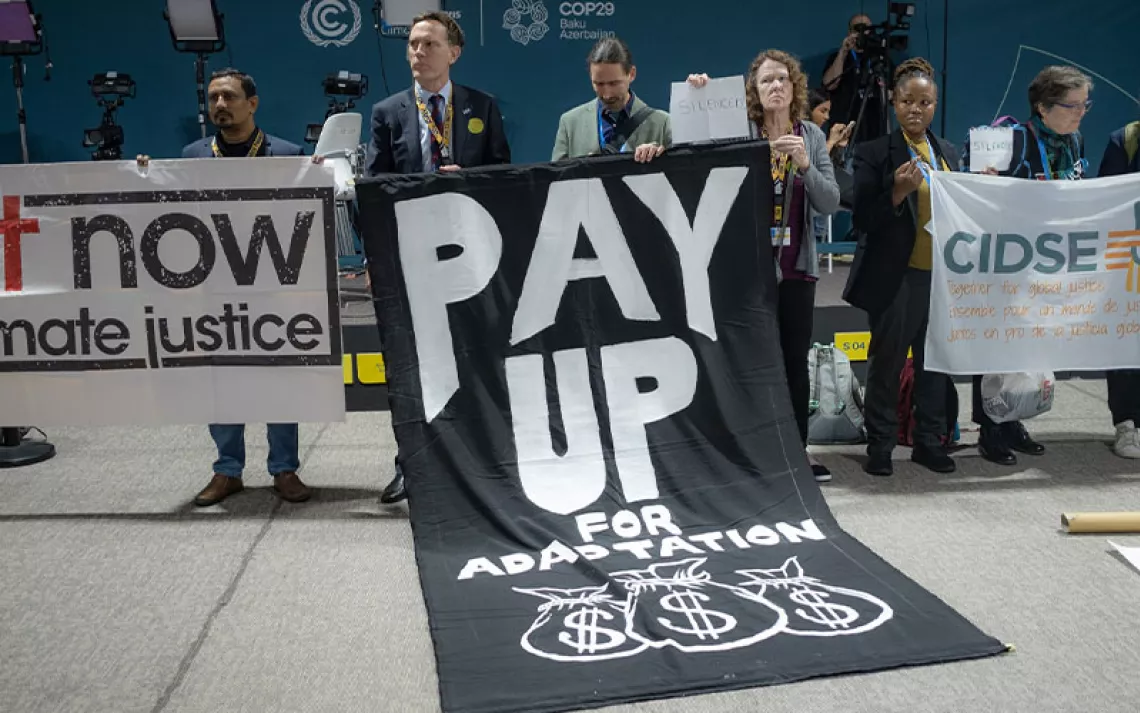Life On the Edge of Climate Change
As told to Lauren Kastner.

Photo by iStock/JonnyNoTrees
Close your eyes and picture your best memory with your family and friends. Have it in mind? If you’re like me, that memory is filled with the warmth and comfort of a familiar home. I hope that, unlike me, you are never asked to put a price on that home.
Welcome to Shishmaref, Alaska, population: 650. We’re a small Iñupiaq community where everyone knows each other. Shishmaref is a barrier island that has been eroding and flooding for the past 50 years, even before climate disruption was widely recognized. Over the past 35 years, we’ve lost 2,500 to 3,000 feet of land. I was born in 1997—over the course of my lifetime, Shishmaref has lost about 100 feet of land.
Within the next two decades, the whole island will erode away completely and become uninhabitable. As if that’s not scary enough, Shell recently attempted to drill oil from the Chukchi Sea near Alaska. Had the company suceeded, it would have been deadly for our marine life and animals.
In 2001, my people voted to relocate along the coast of mainland Alaska, but the estimated cost is $200 to $250 million, so the reality of moving is very complicated. Even though we made this decision, I don’t think anyone is really preparing. The older generations want to stay here because they’ve lived here their whole lives, and they don’t want to leave their homes. Everyone wants to stay, but we have to realize that we have no choice.
Everyone in Shishmaref is friendly and like family. If we move away, everything will change. We won’t see each other as much, and we won't interact the way we do now. It really hurts knowing that your only home is going to be gone, and you won’t hunt, fish, and carry on traditions the way that you’re accustomed to and that your people have done for centuries.

Youth delegate Esau Sinnok is leaving Shishmaref, Alaska, to attend UN climate talks in Paris. | Photo courtesy of Esau Sinnok
I invite any climate skeptics to come to Shishmaref and find out what this place looked like even 50 years ago and see what we are going through now. Once you see how vulnerable my community is to sea-level rise and erosion, you cannot deny that climate disruption is real.
Despite this reality, I appreciate every day that I get to wake up and see the scenery that's still here and that I’m able to call this place home for now. While it’s too late to save the island of Shishmaref, we still have a little bit of hope that we'll be able to preserve our traditions and stay united as a culture.
That's why I am determined to speak up for my community.
The youth are the future of Alaska, so it's important for us to get involved. Youth are very strong, in my opinion, and no matter where we are, we can work to change things. One day I hope to run for Senator or Governor of Alaska to improve the lives of Alaskans and also make a difference for native peoples disproportionately affected by climate disruption around the world.
This week, I will be traveling to Paris, France for the United Nations climate talks. It will be only the second time in my life that I have left Alaska. When I’m there, I hope to make the most of it by sharing my story about adapting to climate disruption, the importance for the United States to increase its commitment to the Green Climate Fund, and the need to include more women and indigenous people in climate policies, because all of these issues are connected.
I hope that world leaders will hear my message and rise to the challenge because it is not just a political issue to me; it’s my future.
 The Magazine of The Sierra Club
The Magazine of The Sierra Club



